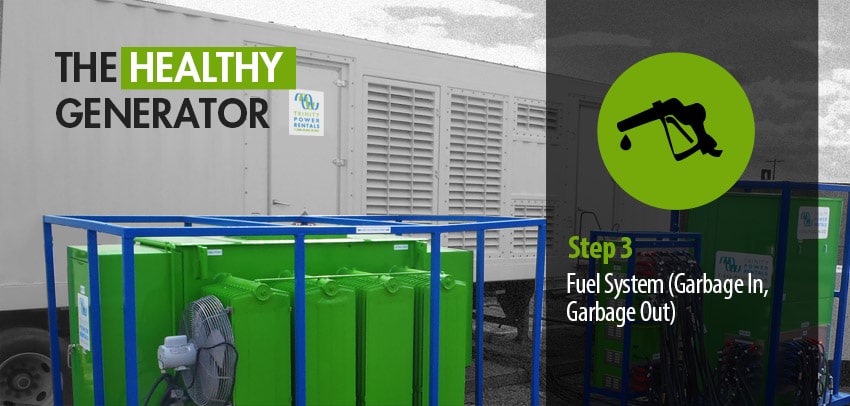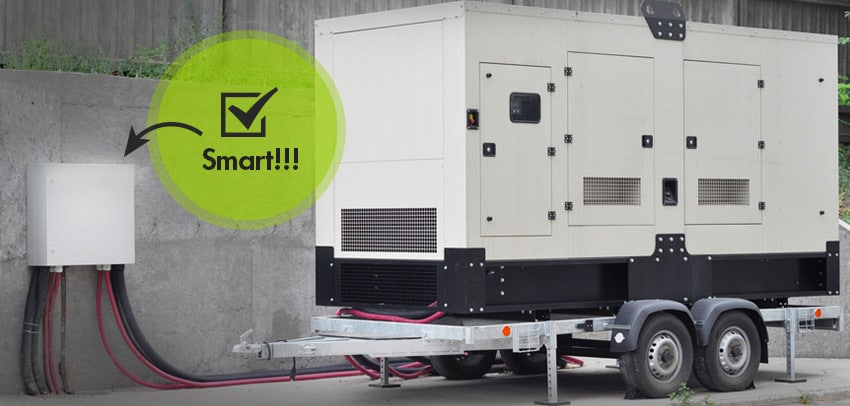- OUR APPROACH
-
COMMITTED TO YOUR SUCCESS
Our approach, developed over decades of experience, is fine-tuned to get the results you want.
We deliver concept-to-completion solutions, designed by temporary power specialists with access to the largest inventory of high-quality power generation and distribution equipment in North America.
-
- Equipment
-
RENTALS
From a wide range of diesel and natural gas generators to transformers, cable, light towers and more, our large rental fleet and extensive vendor network ensure we’ll have the temporary power equipment that your project requires — every time.

-
- Industries
-
INDUSTRIES WE SERVE
For nearly 20 years, we have been at work powering projects across Canada’s industrial sectors.
Select from this sampling of industries to learn how we can put our expertise to work for you.
VIEW ALL- Projects
- About
-
A PROUD HISTORY. A BRIGHT FUTURE.
From our inception in 1998, we have been building our team on a foundation of excellence. Our team members’ passion, expertise and commitment are what have allowed us to grow into a national company with projects across Canada.
Click on the links to learn more about our history, our team or our career opportunities.
- Blog
- Contact
-
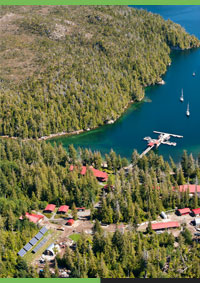
One hundred kilometres north of Port Hardy, in the heart of the Great Bear Rainforest on BC’s wild central coast, Calvert Island has been quietly leading an exceptional existence. Last May, the island made headlines when human footprints were found there, dating back 13,000 years —the oldest evidence of people on BC’s coast.
That discovery was due, in part, to the Hakai Institute a scientific research institute founded in 2009 by British Columbian multi-millionaire Eric Peterson. The Hakai Institute’s flagship research station on Calvert Island is at the forefront of coastal science in BC, with disciplines ranging from archaeology to microbiology to oceanography, as well as being lauded by BC Business Magazine for, “changing what philanthropy can look like.” (Peterson, rather than simply donating his money to the institute, has been very hands-on in helping to run it.)
Perhaps equally noteworthy, however, is the station’s power system, which was commissioned in 2011. Like many small coastal communities in BC, the Calvert Island station is completely off-grid. Unlike other off-grid sites, however, its power system, designed and managed by Hakai Energy Solutions (HES), combines the use of a diesel generator, solar panels and cogeneration to supply electricity and heat to all the infrastructure on the 215 acre property. This system is automated and can be monitored easily by a single individual with no technical background. And stunningly, because of the unique make-up of the power system, the entire station, including cabins, greenhouses, storage buildings, a wastewater treatment plant and a potable water treatment plant, uses a 90kW generator, running an average of only 5.5 hours per day.
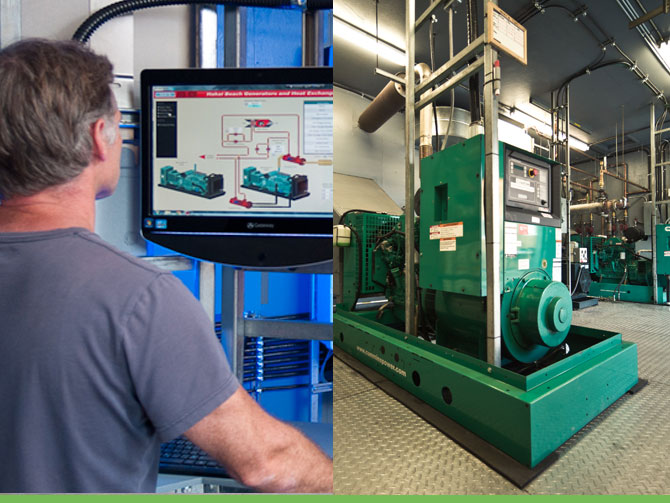
We spoke with Jason Jackson, from HES, about the power system at Calvert Island, and how the research station reduced its diesel fuel consumption by 80%.
Before Jackson, and HES, became involved, the station was powered entirely from a generator. “It had a 250 kW generator, which wouldn’t have been big enough as they expanded,” recalls Jackson. “It was burning a lot of fuel -about 450 litres of diesel a day.”
How did the station go from a 250kW to a 90kW generator, while adding infrastructure? “A major factor there is heat,” Jackson explains: “removal of resistive heat, and replacing that with recovered heat.” In a process called cogeneration, heat exchangers are fixed to both the exhaust and the cooling system of the generator. Glycol is heated as it is pushed through a secondary chamber, and stored in a bank of what Jackson describes as hot water tanks. “Most of that site, with the exception of a few buildings, is heated with the help of cogeneration,” says Jackson.
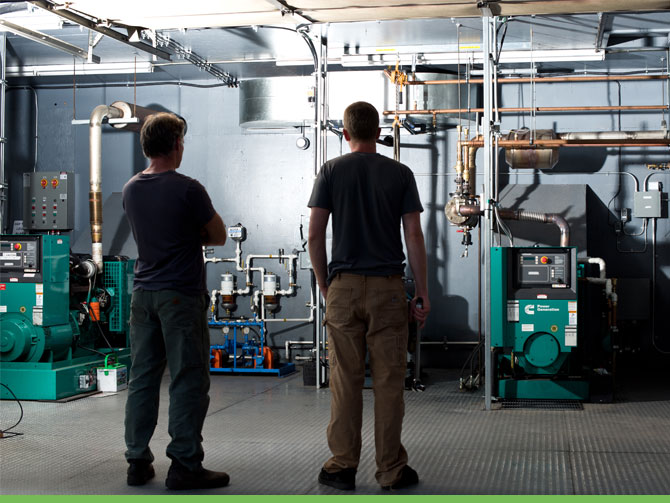
Cogeneration isn’t the only fuel-saving element of Calvert Island station’s power system. They also have a 60 kW solar array, which Jackson says provides 30% of the station’s power. Excess energy is stored in a 16,000 amp hour, 48 volt AGM (absorbent glass mat) battery system. On top of that, something that Jackson calls “demand side management” was employed to reduce the amount of power that was needed. He explains, “We converted the system to LED lighting, we put in intelligent control, and that sort of thing. We insulated buildings.”

With the cost of diesel approaching $1.25/litre on the island, every fuel-economizing measure makes a difference. But the savings extend beyond the cost of fuel.
Jackson explains that when the old fuel storage system needed to be replaced, the institute was able to replace it with a much smaller system. “That’s huge,” enthuses Jackson. “They’re really expensive to build, as you can imagine.”
Management and maintenance costs are also low. Because Hakai’s power system is automated, it requires very little in the way of management. “It’s very easy to operate -we use remote monitoring, we use automated control,” says Jackson. “The system is run 6 months of the year by a caretaker –he’s a retired principal, he’s not a technician.” And because the generator is only running for a fraction of the day, it requires less frequent maintenance. (According to Jackson, the battery system and solar panels don’t require any maintenance at all, and the heat exchanger is on the same schedule as the generator.)
Because the system is relatively new, Jackson isn’t sure about many of the exact numbers -for example, how much energy is actually recovered from the generator’s waste heat. But he says they’re beginning to study that now.
He does know that this kind of power system is something that’s new in Canada: There’s only 3 that I’m aware of in Canada, and we’ve built them all.”
As the numbers come in, there is a good chance they’ll make a strong case for building more.
Related Articles
Subscribe for access to exclusive content
"*" indicates required fields


















